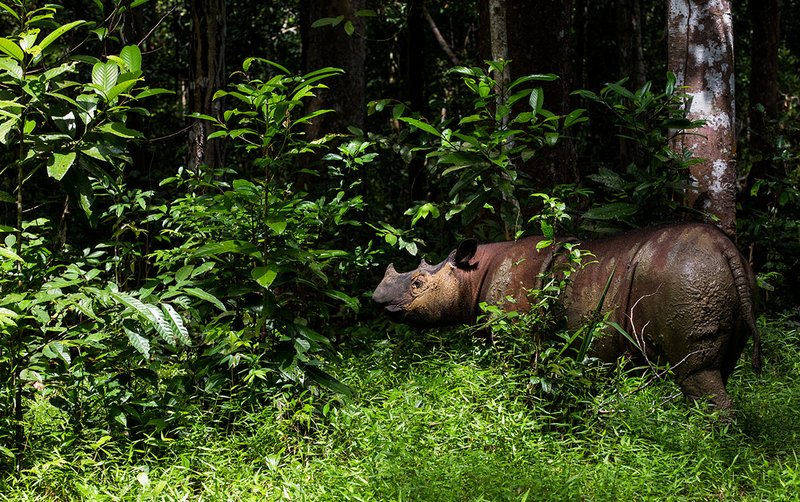
These remarkable creatures are not just another animal in the wild; they are critically endangered. Understanding how to safely navigate such an encounter can help protect both yourself and this unique species. Let’s dive into what you should do, from keeping calm to knowing when to back away.
Understanding the Sumatran Rhinoceros
Before we jump into what to do during an encounter, it helps to know a bit about the Sumatran rhinoceros itself. The Sumatran rhino is distinctive for its smaller size compared to other rhino species and its thick, hairy skin. These animals are typically solitary and can be found in dense rainforests, often near streams or swamps.
Why Are They So Special?
These rhinos are the smallest living rhinoceros species, weighing around 1,000 to 2,000 pounds. Unlike their larger relatives like the white or black rhinos, Sumatran rhinos are more elusive and less frequently seen in the wild. Their population is estimated to be fewer than 80 individuals, making them critically endangered.
By knowing what these animals look like and their behaviors, you’ll have a clearer idea of what to expect if you encounter one. This knowledge can help ease some of the anxiety that comes with a surprise sighting.
Stay Calm and Observe
The first thing to remember if you find yourself face-to-face with a Sumatran rhinoceros is to stay calm. Your heart might race, and panic may set in, but keeping a level head is crucial.
Why Calmness Matters
When an animal senses fear or agitation, it can react unpredictably. The Sumatran rhino, while generally shy, can become defensive if it feels threatened. Take a moment to breathe and observe the situation. Notice the rhino’s body language. Is it relaxed or agitated? Are its ears perked up, or is it making any vocalizations?
If it appears calm and is not approaching you, it’s best to keep your distance. Enjoy the moment from afar, like watching a live nature documentary.
Assess the Situation
Every encounter is unique. After you’ve taken a moment to calm down and observe, assess the situation. Are there any escape routes? Is the rhino blocking your path?
Safe Distance
Typically, it’s wise to maintain a distance of at least 100 feet. This gives you space while also respecting the rhino’s territory. If the rhino is moving in your direction, it’s a good idea to back away slowly.
Gauge Its Behavior
Pay attention to any signs of aggression. If the rhino stomps its feet, snorts, or charges, it’s time to move. Reacting to its behavior can help you avoid a confrontation.
Back Away Slowly
If you determine that you need to leave, do so slowly. Sudden movements can startle the rhino. Here’s how to safely back away:
- Turn your body slightly away from the rhino, keeping it in your sight.
- Step slowly backward, avoiding quick movements.
- Keep your voice low and calm if you need to talk to anyone with you.
Why Slow Movement?
Moving slowly shows that you’re not a threat. Quick movements can be misinterpreted as a challenge, which may provoke the rhino.
Finding Shelter or a Safe Area
If the situation escalates and the rhino charges or appears aggressive, find shelter or a safe area. This might mean climbing up a tree, if feasible, or moving behind natural barriers like large rocks.
Natural Barriers
Rhinos are not great climbers, so using natural elements of the environment to shield yourself can be a smart move. If you have a buddy with you, position yourselves in a way that you both have cover.
Document the Encounter (When Safe)
Once you’re at a safe distance, and it feels appropriate, consider documenting your experience. This could be through notes, sketches, or photographs.
Why Documenting Matters
Not only does this serve as a reminder of an extraordinary encounter, but it can also contribute to conservation efforts. Sharing your experience can raise awareness about the Sumatran rhinoceros and help others understand the importance of preserving their habitat.
Encountering a Sumatran rhinoceros in the wild can be a thrilling yet nerve-wracking experience. Remember to stay calm, observe carefully, and back away slowly if needed. Each step you take is not just about protecting yourself; it’s also about respecting these incredible animals.
As you navigate through the jungles where they roam, keep their plight in mind. Every sighting counts in the journey towards conservation. It’s a moment to cherish, learn from, and share with others. When we know how to behave in the wild, we help coexist with nature, protecting these gentle giants for future generations to enjoy.

